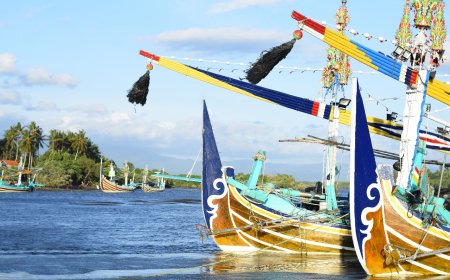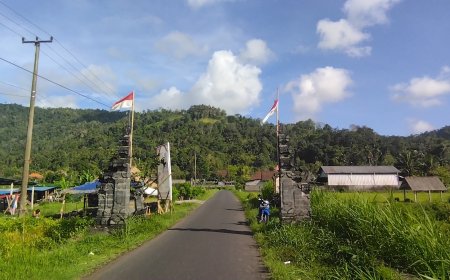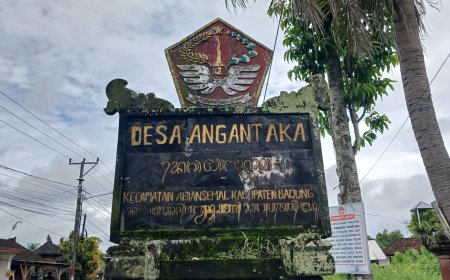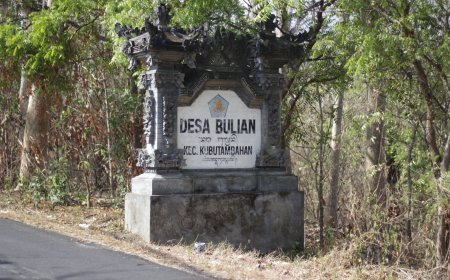Batuan Traditional Village: A Village with Preserved Ancient
Bali, the Island of the Gods renowned for its natural beauty, also houses cultural treasures that are no less valuable. Amidst the bustling tourism of famous Bali, there is a village that firmly preserves its cultural heritage. Welcome to Batuan Traditional Village, a place that sets a living example of how ancient wisdom can be preserved in an ever-changing society.
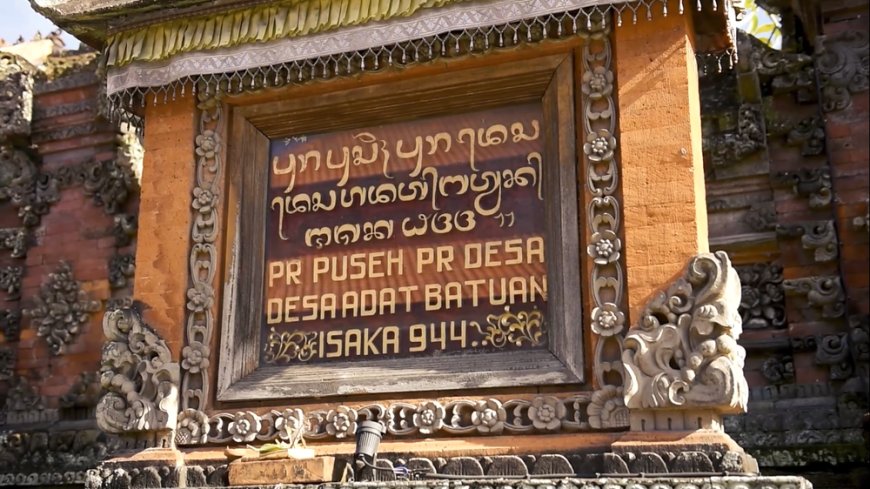
Batuan Village is one of the ancient villages in Bali that continues to preserve its local wisdom to this day. Geographically, Batuan Village is located in the Sukawati District, Gianyar Regency, and is situated between two rivers, the Petanu River and the Wos River, which provide a source of livelihood for its residents. The long historical journey of Batuan Village is recorded in an ancient inscription called the Baturan Inscription. This inscription consists of seven copper plates that provide insights into the state of Batuan Village a thousand years ago. It is mentioned in the Baturan Inscription that it was written in the year 944 Saka or precisely on December 26, 1022, during the reign of the ancient Balinese king Sri Aji Marakata. In the past, this village was called Baturan Village, but over time, the name was changed to Batuan Village.
As a tourist village, Batuan Village boasts a variety of captivating tourist destinations and attractions. One of them is Desa and Puseh Temple , Batuan Traditional Village. Like the Kahyangan Tiga temples in Bali, these temples are used for worship and religious activities by the Hindu community of the village. Additionally, the artistic value embedded in the architecture of the temple buildings makes Pura Desa and Puseh Batuan Village a unique attraction for tourists, leading it to be opened as a popular destination for international visitors. However, the sanctity, sacredness, and environmental preservation of the temple are still upheld and maintained by the local community. Besides the beauty of every ornament found within, another attraction of this temple lies in its rich historical journey, being the oldest puseh temple in Bali and containing ancient relics dating back to prehistoric times. The archaeological remnants preserved at Pura Puseh Desa Batuan include sculptures, lingga, and stone implements. Based on the discovery of these archaeological artifacts, Desa and Puseh Temple in Batuan have been designated as cultural heritage sites protected by the Bali Cultural Heritage Preservation Office under Law Number 11 of 2019 regarding cultural heritage.
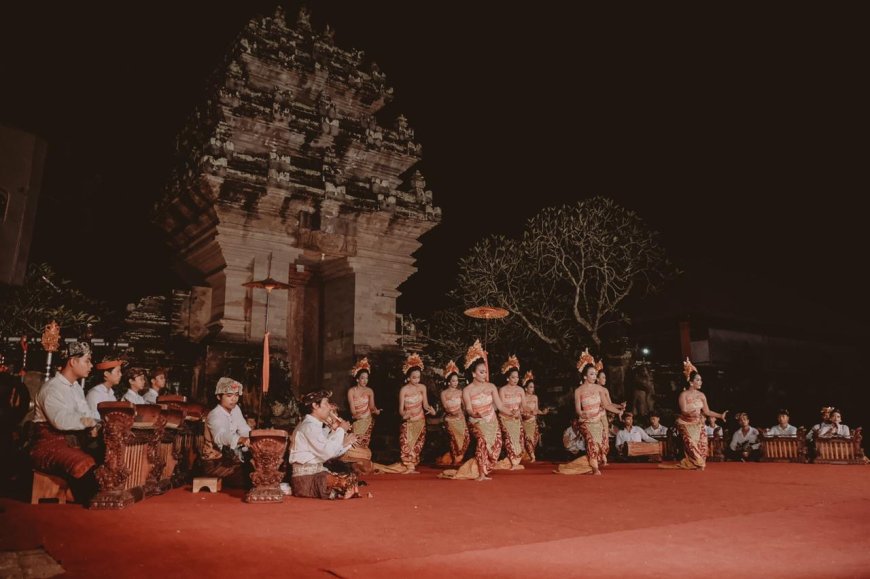
Rejang Sutri Dance (Photo Source: Editorial Collection)
The Batuan community has diligently preserved their local wisdom, which has been passed down through the ages. One such tradition, believed to ward off calamity in Batuan Village and still practiced to this day, is the Rejang Sutri Dance. The Rejang Sutri Dance is a sacred dance performed at the Wantilan of the Pura Desa and Puseh Desa Adat Batuan every month from Sasih Kalima (November) to Sasih Kasanga (March) by the rotating members of the Batuan Village community. The dancers in this dance are women from various banjars (neighborhood groups) in Batuan Village, with no specific age restrictions, as long as they are not in a state of impurity. The presence of the Rejang Sutri Dance in Batuan Adat Village is linked to the community's belief in the epic battle of supernatural powers between I Dewa Gede Mecaling and I Dewa Babi. In this wager, I Dewa Gede Mecaling was defeated and had to leave Batuan Village. However, he refused to accept his defeat and vowed to seek revenge by spreading disease in Batuan Village from Sasih Kalima to Sasih Kasanga. Therefore, the community continues to uphold and perform the tradition of the Rejang Sutri Dance to this day. Alongside the sacred dance performance, there is also a cockfighting event that takes place before the Rejang Sutri Dance performance.
As part of Gianyar Regency, renowned for its nickname “Gumi Seni” the flow of art runs abundantly in Batuan Village. Numerous artists have been born in Batuan Village, ranging from painters, dancers, sculptors, to woodcarvers. One highly popular form of art in Batuan Village is the Batuan-style painting. Since 2018, Batuan painting has been designated as an Indonesian Intangible Cultural Heritage by the Ministry of Education and Culture. This art form is unique due to its complex and relatively lengthy techniques and processes. The techniques commonly used by Batuan painters include nyeket, ngorten, nyawi, nyigar, ngucek and manyunin. In terms of themes, Batuan painters often depict folk tales, wayang (shadow puppet) stories, daily life, and contemporary subjects. In Batuan Village, there is an association of Batuan-style painters called Baturulangun, consisting of Batuan painters. This association strives to preserve Batuan-style painting and pass it on to the next generation by offering free Batuan-style painting workshops to elementary school children in Batuan Village.
Apart from painting, Batuan Village also preserves its unique dance form, known as the Gambuh Dance. Gambuh is a classical Balinese dance drama of great antiquity. The storyline for Gambuh is taken from the Malat palm-leaf manuscript, featuring stories of Panji, with dialogues in both Kawi and Balinese languages, according to the character’s roles. Performances of the Gambuh Dance are accompanied by a set of gamelan pagambuhan, with its distinctive large bamboo flute. In Batuan Village, Gambuh is typically performed during the odalan ceremonies at the Pura Desa and Puseh Desa Adat Batuan, which occur every six months. The duration of a Gambuh dance performance can be quite long, approximately three hours per session.
The village of Batuan, as a Village of Art, possesses a wealth of tradition and cultural artistry. This is inseparable from the role and spirit of the local community in preserving the ancient values of Batuan Village itself. In the celebration of the one-thousand-year-old Baturan inscription held on December 26, 2022, it was presented under the theme "Sahasra Warsa Baturan." This moment marked a turning point for the Batuan community as a whole to reconnect with their true identity as part of a living cultural society that inspires culture in every aspect of their lives.









